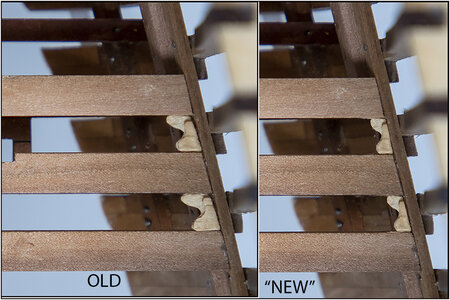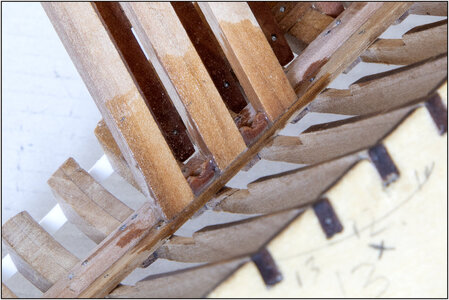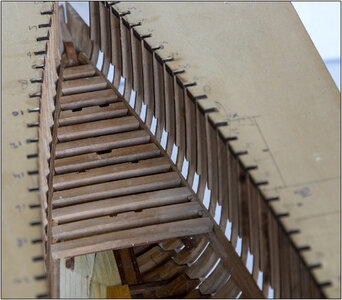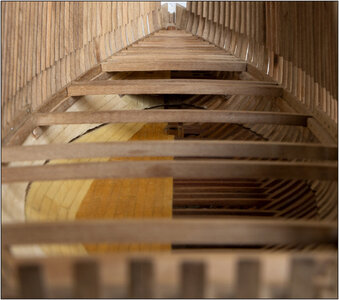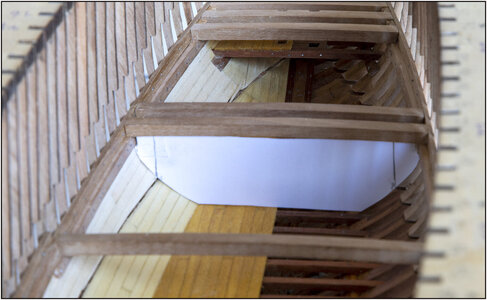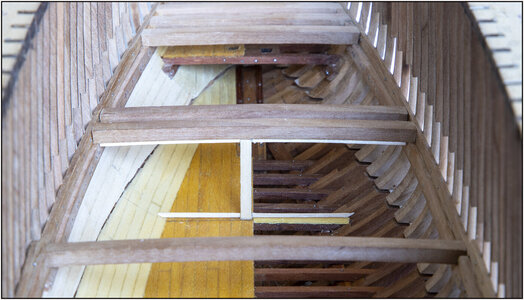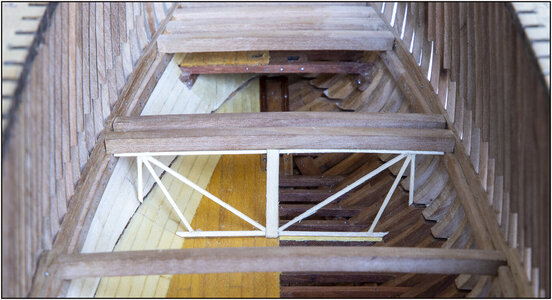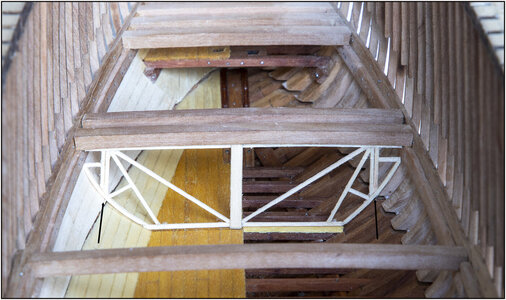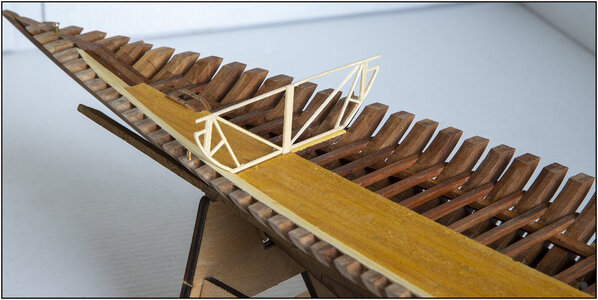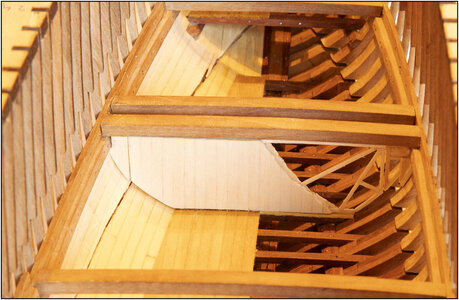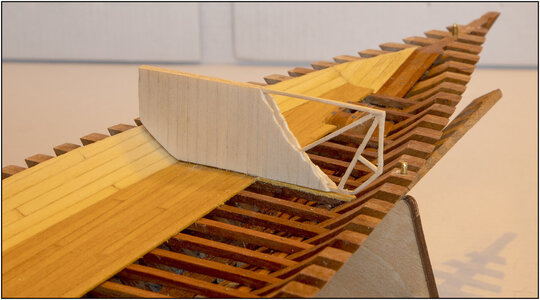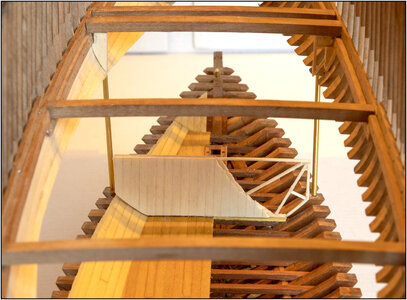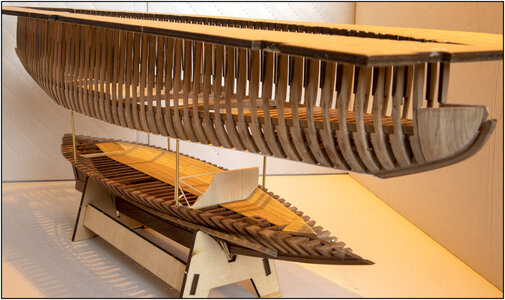There had been some questions and comments about making the double knees.
So here's how I'm going to make them in 6 steps:
View attachment 254154
1: saw strips of 2mm from the remains of the planks of the deck beams. So, the same wood colors the beams;
2: sand the strip to size and the correct angle;
3: mill the top knee to half the thickness of the strip;
4: cut off at a good height;
5: sanding to the correct height;
6: File away the middle part and form the lower knee. The result, along with the old 'rotten tooth'.
Here are 2 new ones that have passed the water test:
View attachment 254155
To approximate the color when they are in the oil.
I'm waiting a while to make the other knees because I'm not sure yet how I'm going to plank the deck. So I don't know yet what I will or will not see. Waterways will be built on the closed side, but how wide, to where is the planking and where the view of the beams?
Therefore the foredeck closed with deck beams up to beam 12:
View attachment 254156
I have to sand the top of the clamps to the above of the beams.
Because from this beam 12 starts the front cabin: the ForeCastle.
With a view over the beams:
View attachment 254157
The front cabin is located between beams 12 and 19. I had already installed 18, so 19 behind it. Below beam 19 is the wall between the cabin and the IceHold, the part where the ice for preserving the fish is stored.
A mold made in the closed hull:
View attachment 254158
Started with the frame. I cut a few pieces of 3x1mm wood strips for the walls in 3rd so that I got 1x1mm beams. Custom made bottom and top beam:
View attachment 254159
With halfway the last plank of the half wall for reinforcement.
The frame was built up step by step with a few braces to give the bottom and top beam the curve of the floor beams and to keep it in shape:
View attachment 254160
Because there is a piece of the curve of the hull in the upper part of the hull, I can't make the entire wall in 1 piece. I have to cut off the side pieces. They will be in the top section soon:
View attachment 254161
At the arrows 'the ears' come off. The intersection between the two bars is slightly slanted inwards. The will soon (if all goes well) slide past each other.
The wall itself comes in the lower part, minus the 2 'ears':
View attachment 254162
The idea is that the parts slide past each other if I want to show the hull closed.
I'll have to play around with that some more …….
Regards, Peter





